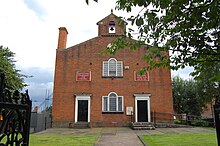
The Countess of Huntingdon's Connexion is a small society of evangelical churches, founded in 1783 by Selina Hastings, Countess of Huntingdon, as a result of the Evangelical Revival. For many years it was strongly associated with the Calvinist Methodist movement of George Whitefield.

Capesthorne Hall is a country house near the village of Siddington, Cheshire, England. The house and its private chapel were built in the early 18th century, replacing an earlier hall and chapel nearby. They were built to Neoclassical designs by William Smith and (probably) his son Francis. Later in the 18th century, the house was extended by the addition of an orangery and a drawing room. In the 1830s the house was remodelled by Edward Blore; the work included the addition of an extension and a frontage in Jacobean style, and joining the central block to the service wings. In about 1837 the orangery was replaced by a large conservatory designed by Joseph Paxton. In 1861 the main part of the house was virtually destroyed by fire. It was rebuilt by Anthony Salvin, who generally followed Blore's designs but made modifications to the front, rebuilt the back of the house in Jacobean style, and altered the interior. There were further alterations later in the 19th century, including remodelling of the Saloon. During the Second World War the hall was used by the Red Cross, but subsequent deterioration prompted a restoration.
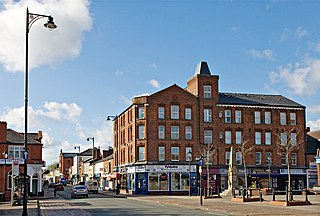
Tyldesley is a town in the Metropolitan Borough of Wigan in Greater Manchester, England. Within the boundaries of the historic county of Lancashire, it is north of Chat Moss near the foothills of the West Pennine Moors, 7.7 miles (12.4 km) southeast of Wigan and 8.9 miles (14.3 km) northwest of Manchester. At the United Kingdom Census 2001, the Tyldesley built-up area, excluding Shakerley, had a population of 16,142.

Woodhey Chapel is a Grade I listed private chapel off Woodhey Lane near Faddiley, Cheshire, England. The listing describes the building as 'A handsome and intact example of a chapel from a period when few were built'. The chapel, which is now disused, stands in fields near the site of the demolished Woodhey Hall. Its west end is connected to buildings of the former hall by a causeway which is raised by about 5 feet (2 m).

St Peter's Church is a chapel to the west of Tabley House near Knutsford, Cheshire, England. It is recorded in the National Heritage List for England as a designated Grade I listed building.
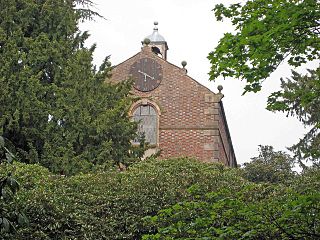
All Saints Chapel, Somerford is in an isolated position near the hamlet of Brereton Heath, between Congleton and Holmes Chapel, Cheshire, England. It is recorded in the National Heritage List for England as a designated Grade II* listed building. The chapel is in the Anglican benefice of Astbury and Smallwood in the deanery of Congleton, the archdeaconry of Macclesfield and the diocese of Chester.
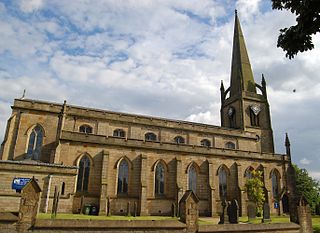
St George's Church is an Anglican parish church serving Tyldesley and Shakerley in Greater Manchester, England. It is part of Leigh deanery in the archdeaconry of Salford and the diocese of Manchester. The church, together with St Stephen's Church, Astley and St John's Church, Mosley Common is part of the united benefice of Astley, Tyldesley and Mosley Common.

The Parish Church of St Mary the Virgin is a Church of England parish church in Leigh, Greater Manchester, England. It is a member of the Salford & Leigh deanery in the archdeaconry of Salford, diocese of Manchester. It is recorded in the National Heritage List for England as a designated Grade II* listed building.

West Street Baptist Church is a Baptist church in East Grinstead, a town in the district of Mid Sussex, one of seven local government districts in the English county of West Sussex. Founded in 1810 as a chapel linked to the Countess of Huntingdon's Connexion, it was the first Nonconformist place of worship in East Grinstead; the town's subsequent development made it a local centre of both Protestant Nonconformity and alternative religions. The red-brick building is still used by a Baptist community, and is protected as a Grade II listed building.

Southover General Baptist Chapel is a former Baptist place of worship in the ancient village of Southover, now part of the town and district of Lewes, one of six local government districts in the English county of East Sussex. Founded in 1741 as the first Baptist place of worship in the area, it attracted a congregation of General Baptists whose theological views gradually moved towards Unitarianism. This led to their union with the members of the nearby Westgate Chapel, after which the flint and brick building housed other congregations and secular groups before its conversion to a house. The building is protected as a Grade II by English Heritage.
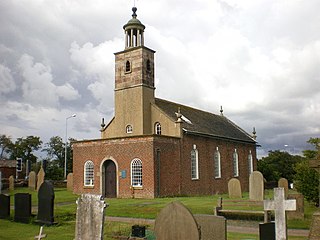
St Mary's Church is a redundant Anglican church on the A59 road as it passes to the south of the village of Tarleton, Lancashire, England. It is recorded in the National Heritage List for England as a designated Grade II* listed building, and is under the care of the Churches Conservation Trust. It is described by the Churches Conservation Trust as a "picturesque early Georgian chapel" with "a lovely unspoiled interior".

Jarvis Hall is a former Nonconformist chapel in the village of Steyning, in the Horsham district of the English county of West Sussex. Since its construction in 1835, the Classical-style building has been used by four different Nonconformist Christian denominations: the Countess of Huntingdon's Connexion, Wesleyan Methodists, the Salvation Army and Plymouth Brethren. The Brethren occupied it last and for the longest time. After about 150 years of religious use, it was sold for residential conversion. English Heritage has listed the former chapel at Grade II for its architectural and historical importance.
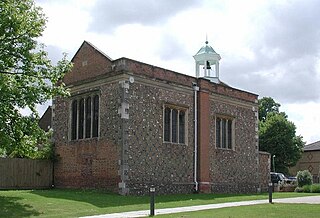
Oxhey Chapel is a redundant Anglican chapel in Oxhey, a suburb of Watford, Hertfordshire, England. It is recorded in the National Heritage List for England as a designated Grade II* listed building, and is under the care of the Churches Conservation Trust. The chapel stands, surrounded by 1940s housing in South Oxhey between a modern church and its vicarage, some 2 miles (3.2 km) south of the centre of Watford.
Barnfield Mills was a complex of cotton mills that operated in Tyldesley, Greater Manchester, England from the middle of the 19th century.

Sacred Heart Church is a Grade II listed redundant Roman Catholic church on Tyldesley Road, Hindsford, Atherton in Greater Manchester, England. It has been designated by English Heritage as a Grade II listed building.
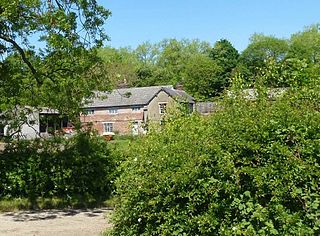
Garrett Hall or The Garrett is a former manor house and now a grade II listed farmhouse in Tyldesley, Greater Manchester, England. The hall was designated a grade II listed building in 1987.
Chaddock Hall was an ancient hall on Chaddock Lane in Tyldesley, Greater Manchester, England. It was designated a Grade II listed building in 1966. It was gutted in an arson attack in 2014.

Carey Baptist Church, is in Pole Street, Preston, Lancashire, England. It is recorded in the National Heritage List for England as a designated Grade II listed building.

Mather Lane Mills was a complex of cotton mills built by the Bridgewater Canal in Bedford, Leigh in Lancashire, England. The No 2 mill and its former warehouse are grade II listed buildings.

South Street Free Church is a church in the centre of Eastbourne, a town and seaside resort in the English county of East Sussex. Originally Congregational, it is now aligned to the Countess of Huntingdon's Connexion—a small group of Evangelical churches founded by Selina Hastings, Countess of Huntingdon during the 18th-century Evangelical Revival. The church was founded in 1897 as an offshoot from an earlier Congregational chapel, and initially met in hired premises. Local architect Henry Ward designed the present church in 1903; the "characterful" and "quirky" Arts and Crafts-style building has been listed at Grade II by Historic England for its architectural and historical importance.
